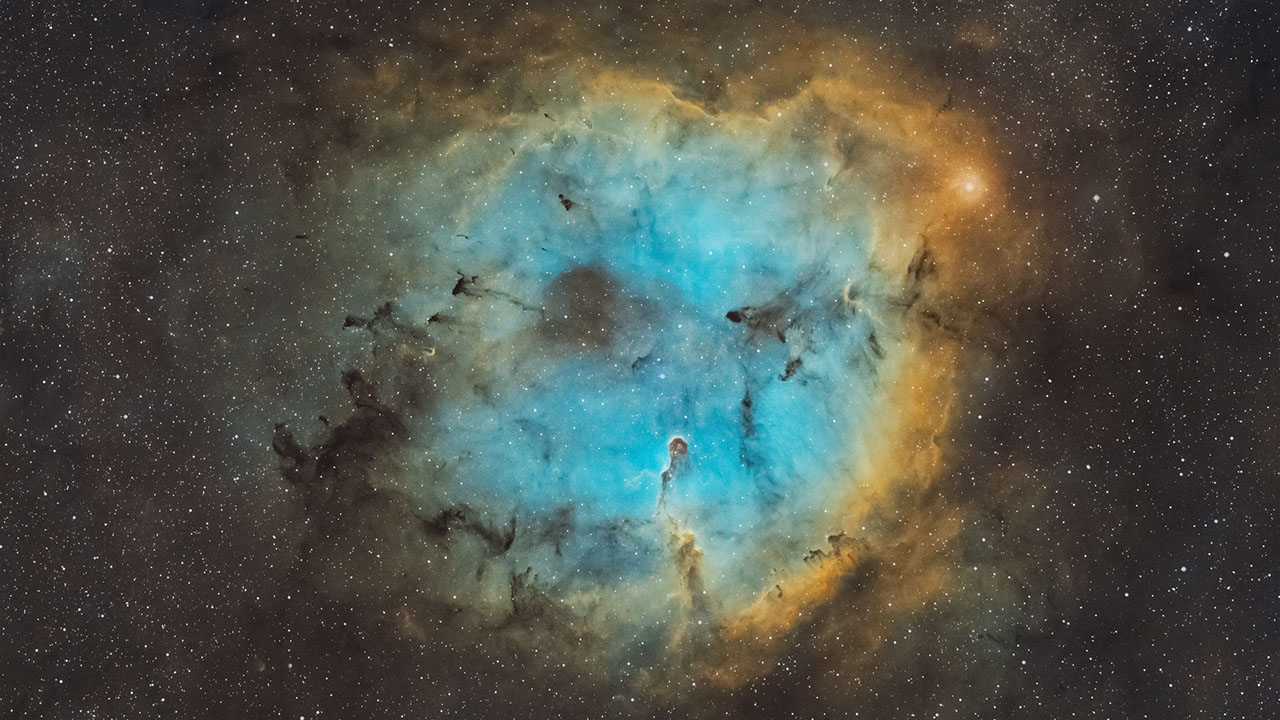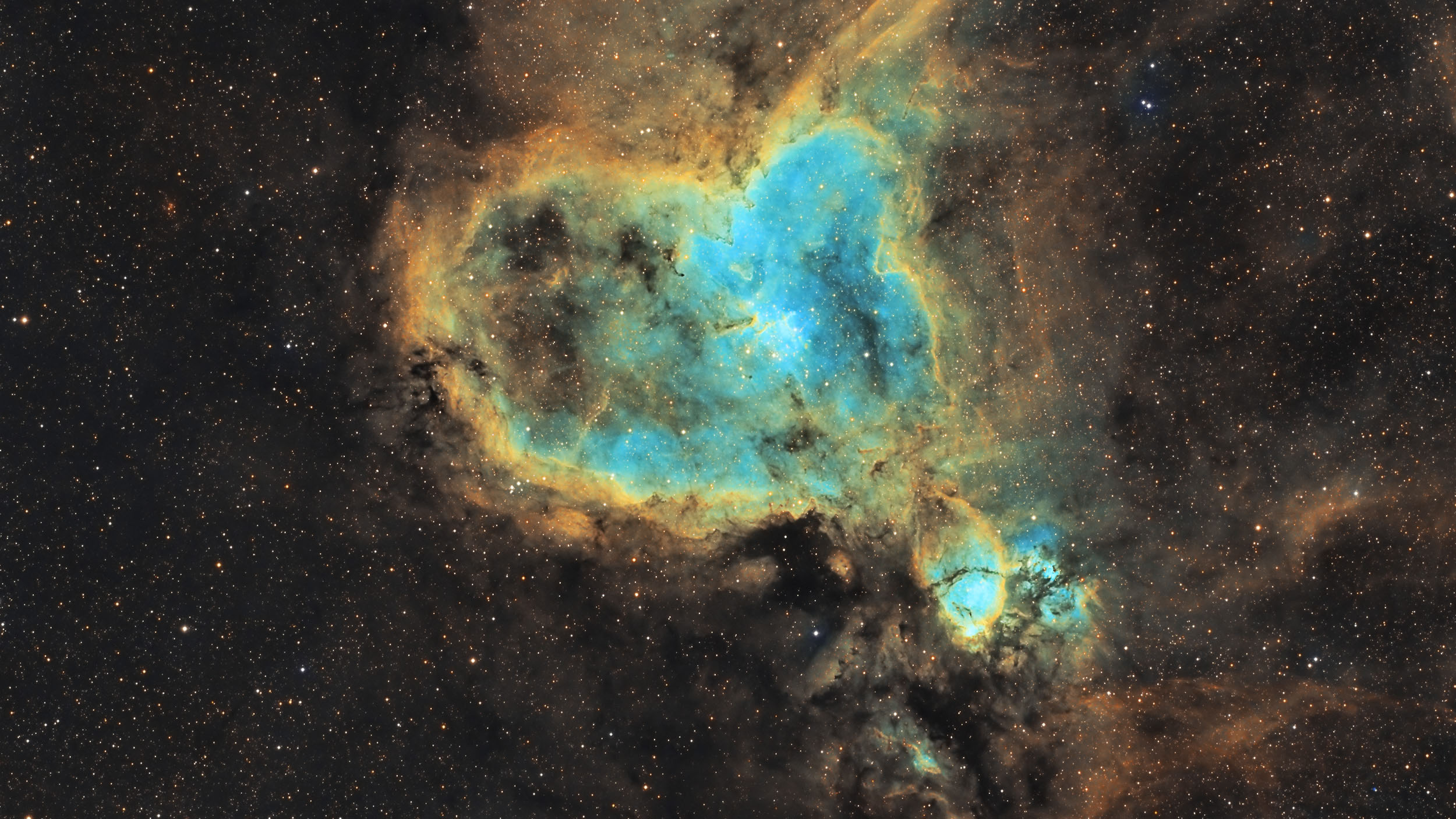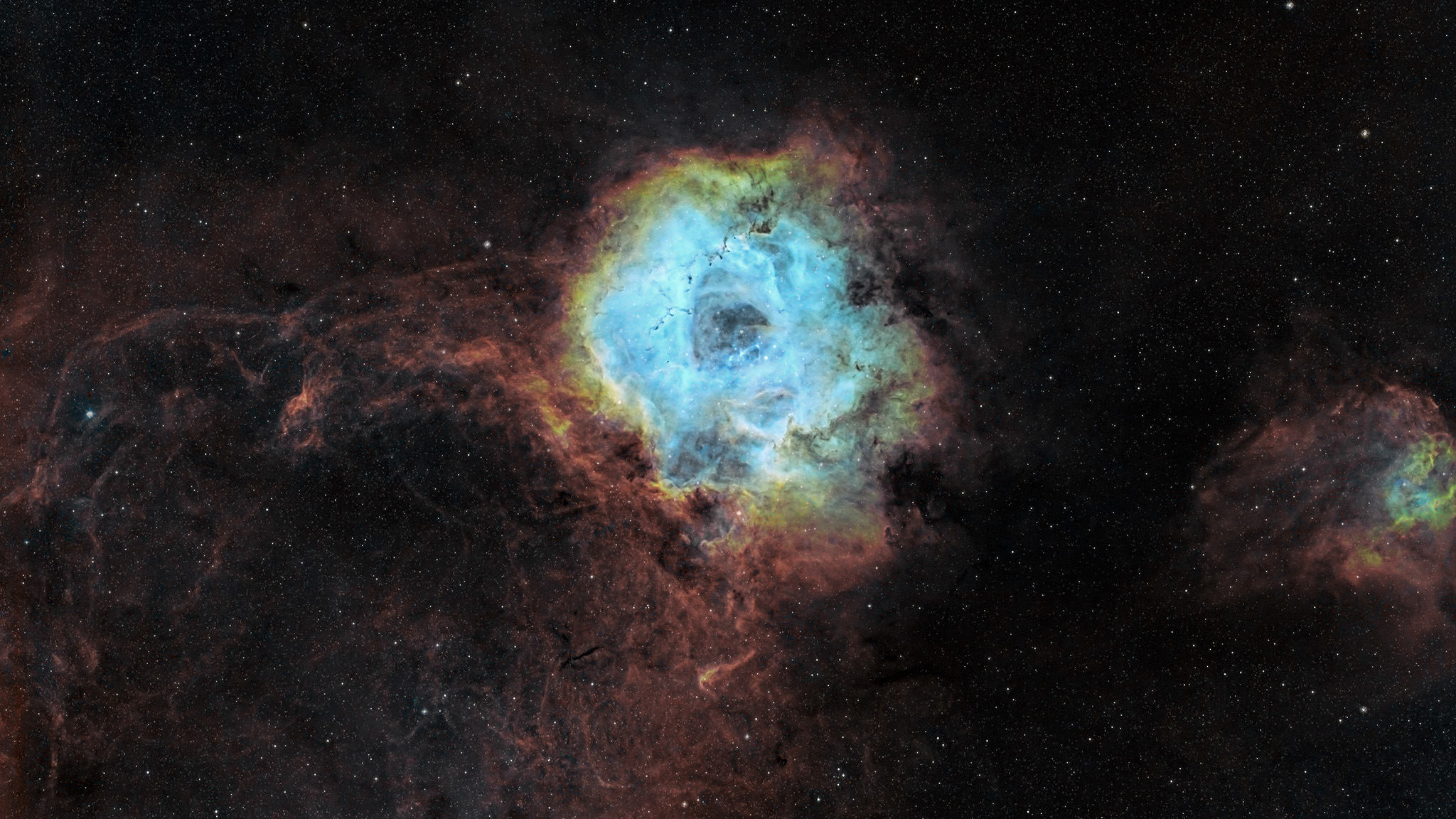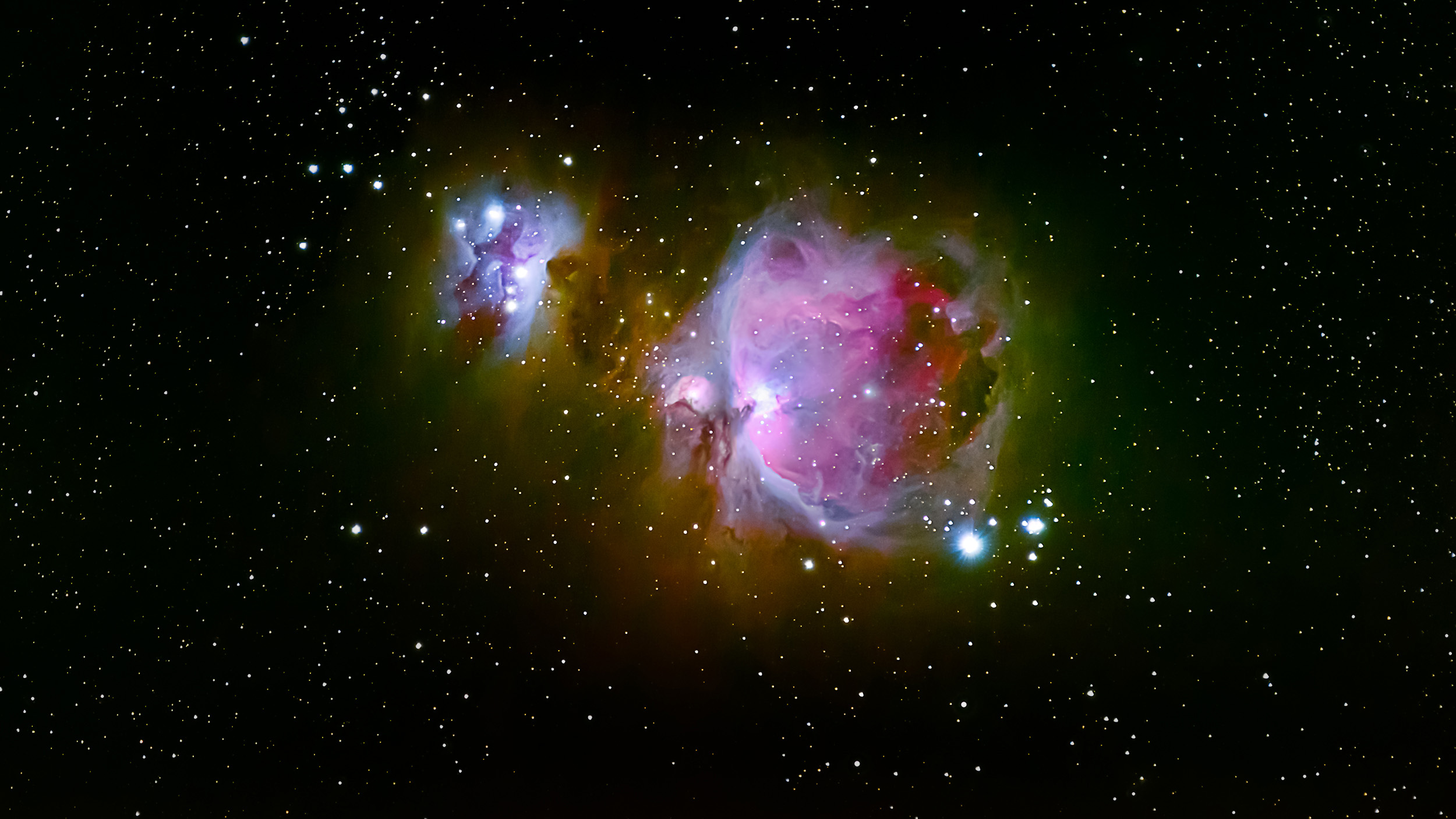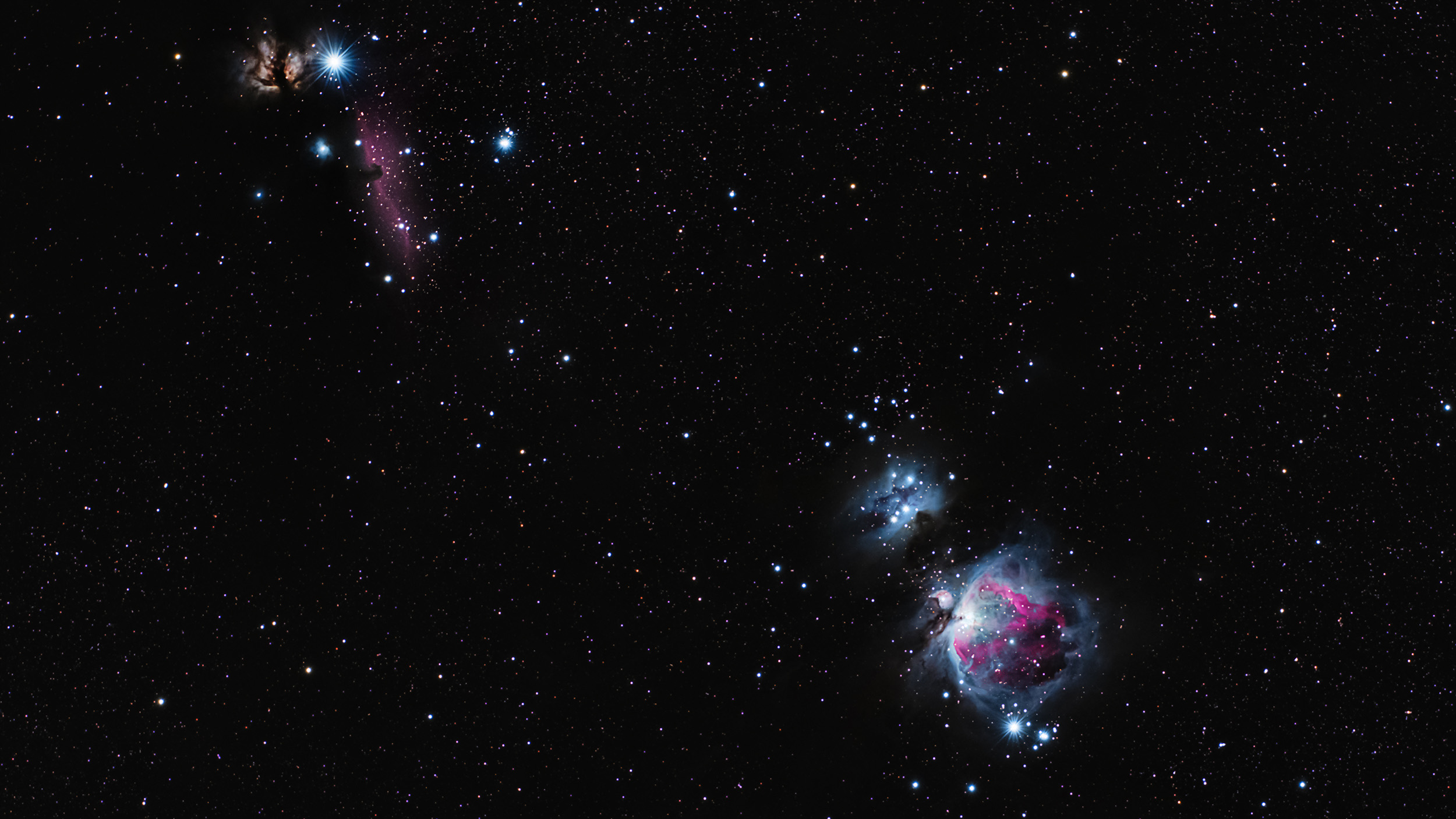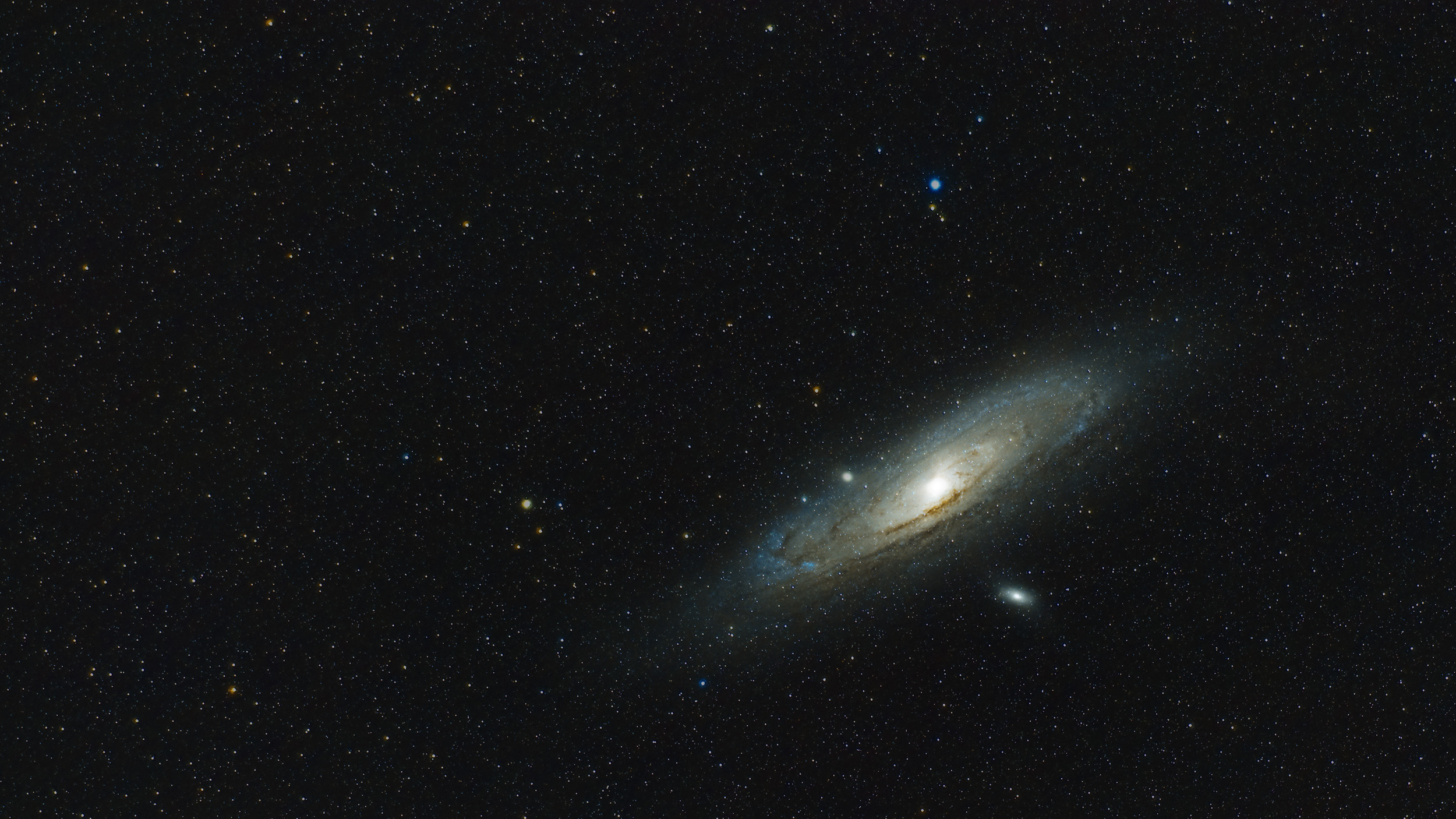Andromeda Galaxy
The Andromeda Galaxy, also known as Messier 31, M31, or NGC 224 is a barred spiral galaxy approximately 2.5 million light-years (770 kiloparsecs) from Earth and the nearest major galaxy to the Milky Way. The virial mass of the Andromeda Galaxy is of the same order of magnitude as that of the Milky Way, at 1 trillion solar masses (2.0×1042 kilograms). The mass of either galaxy is difficult to estimate with any accuracy, but it was long thought that the Andromeda Galaxy is more massive than the Milky Way by a margin of some 25% to 50%.
The number of stars contained in the Andromeda Galaxy is estimated at one trillion (1×1012), or roughly twice the number estimated for the Milky Way. The Milky Way and Andromeda galaxies are expected to collide in around 4-5 billion years, merging to form a giant elliptical galaxy or a large lenticular galaxy. With an apparent magnitude of 3.4, the Andromeda Galaxy is among the brightest of the Messier objects, making it visible to the naked eye from Earth on moonless nights, even when viewed from areas with moderate light pollution.
RIGHT ASCENSION
00h 42m 44.3s
DECLINATION
+41° 16′ 9″
DISTANCE
2.45 million ly
This is one of the first astrophotography images I took, this is with a Nikon D810 and 500mm lens. A tracking mount is used to capture multi-minute exposures which rotates and the same speed as the Earth and therefore matches the apparent rotation of the stars. This results in a sharp image and no star trails.
Several hundred images were taken which are then stacked together to produce the final image.
